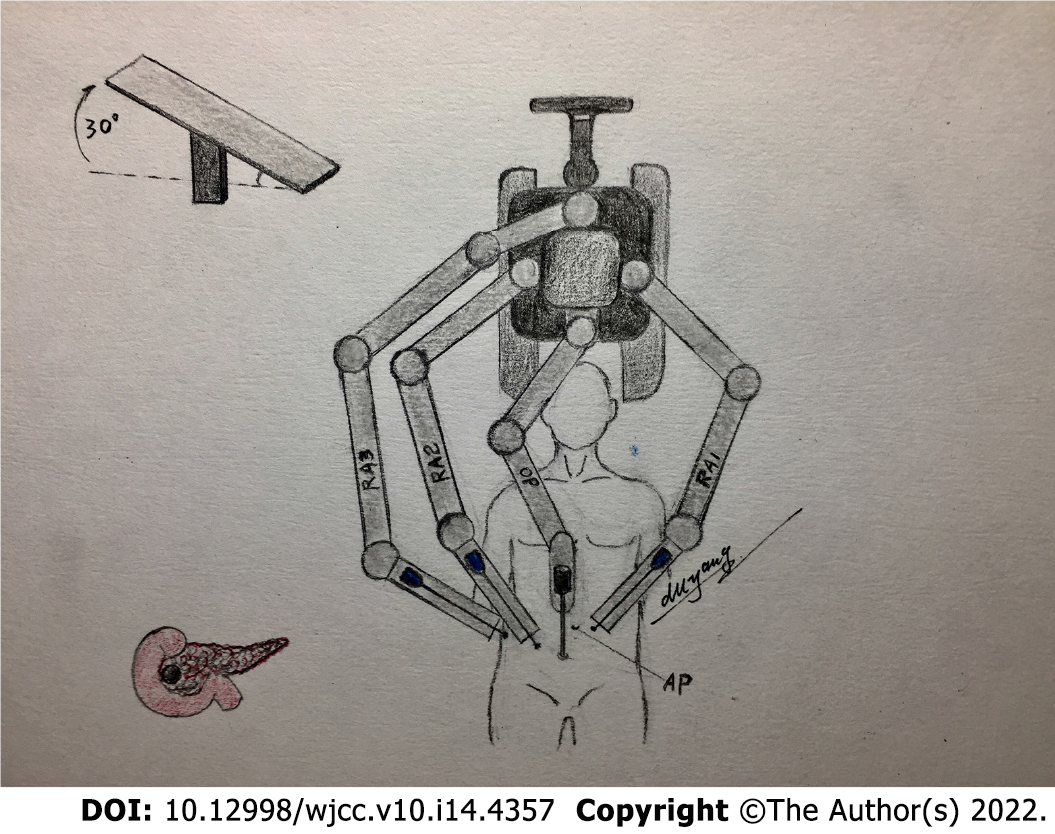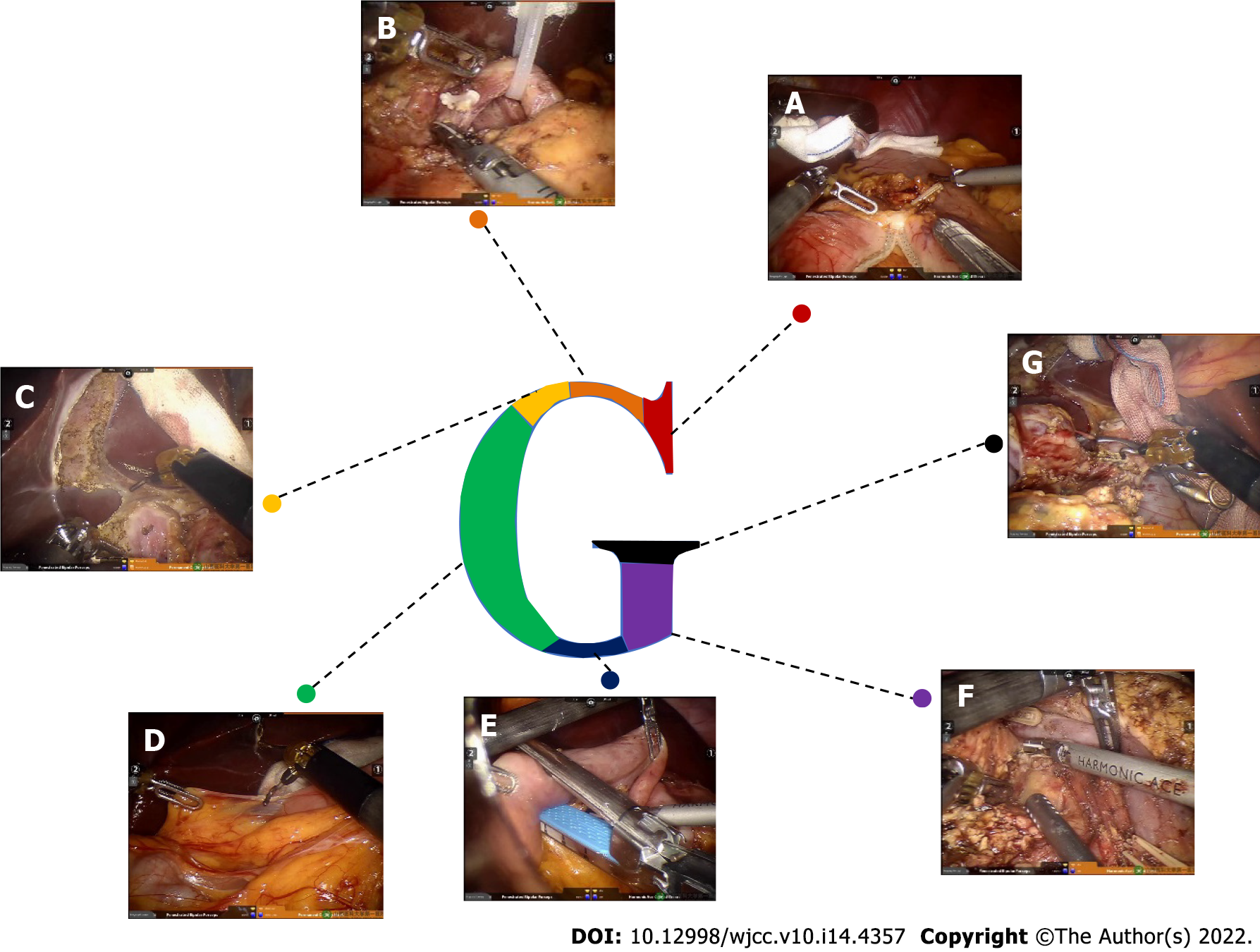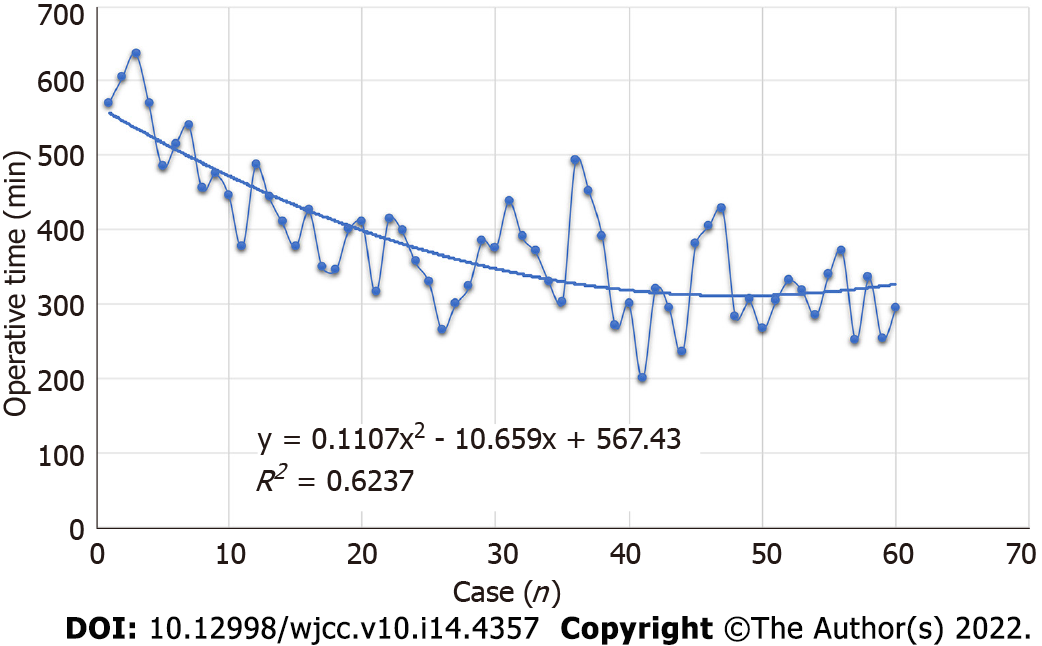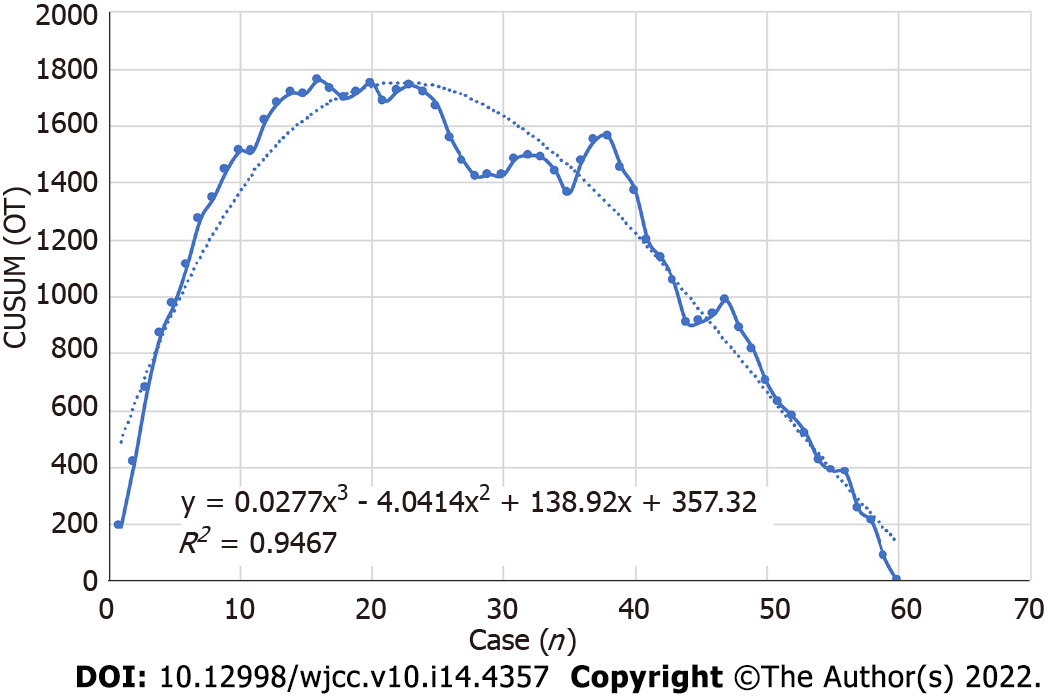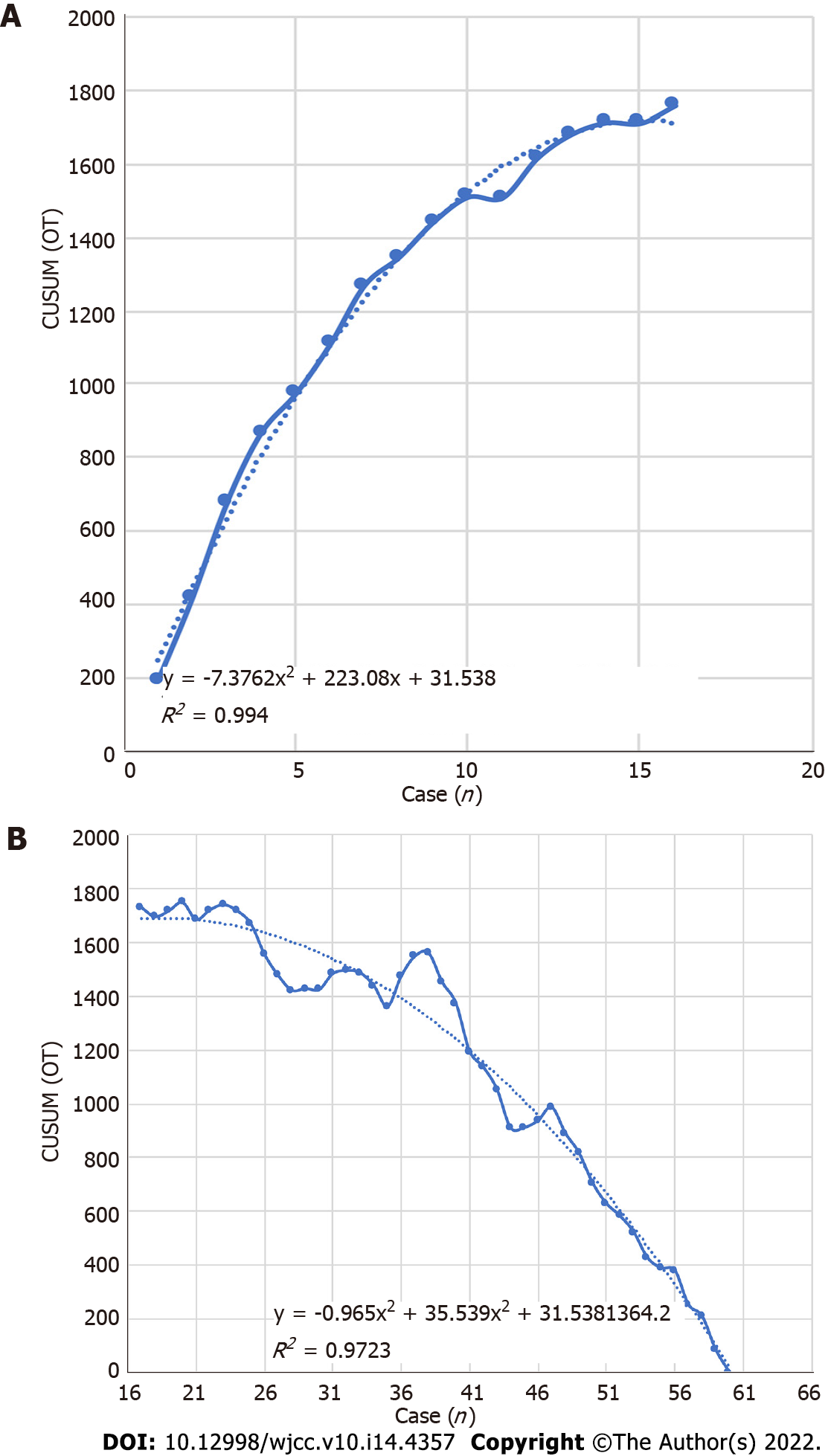Copyright
©The Author(s) 2022.
World J Clin Cases. May 16, 2022; 10(14): 4357-4367
Published online May 16, 2022. doi: 10.12998/wjcc.v10.i14.4357
Published online May 16, 2022. doi: 10.12998/wjcc.v10.i14.4357
Figure 1 Trocar placement for robotic pancreaticoduodenectomy.
Figure 2 The location of the robot and patient.
Figure 3 The surgical procedure for the “G-shaped” approach.
A: Disconnected stomach; B: Dissociated gastric duodenal artery; C: Retrograde removal of the gallbladder; D: Perform the Kocher incision, fully free duodenum; E: Disconnected duodenum; F: Establishment of a pancreatic tunnel and cutting the neck of the pancreas and removal of the uncinate process; G: Dissociated bile duct.
Figure 4 Graph of operative times plotted for all consecutive 60 patients.
Figure 5 Cumulative sum-operation time curve for the two learning phases of “G”-shaped robotic pancreaticoduodenectomy.
CUSUM: Cumulative sum; OT: Operative time.
Figure 6 The phases present an upward slope.
A: The first phase; B: The second phase. CUSUM: Cumulative sum; OT: Operative time.
- Citation: Wei ZG, Liang CJ, Du Y, Zhang YP, Liu Y. Learning curve for a surgeon in robotic pancreaticoduodenectomy through a “G”-shaped approach: A cumulative sum analysis. World J Clin Cases 2022; 10(14): 4357-4367
- URL: https://www.wjgnet.com/2307-8960/full/v10/i14/4357.htm
- DOI: https://dx.doi.org/10.12998/wjcc.v10.i14.4357














